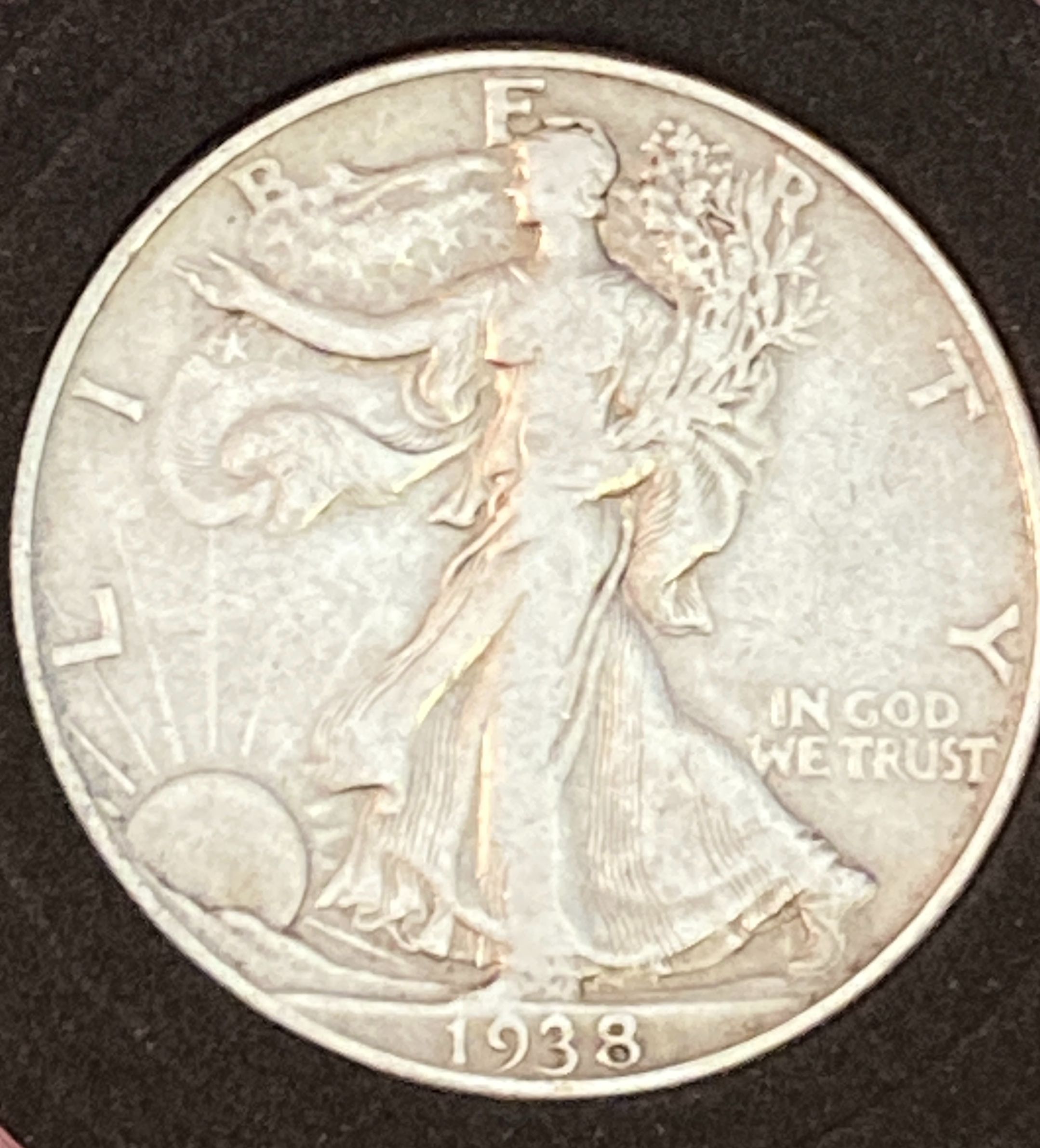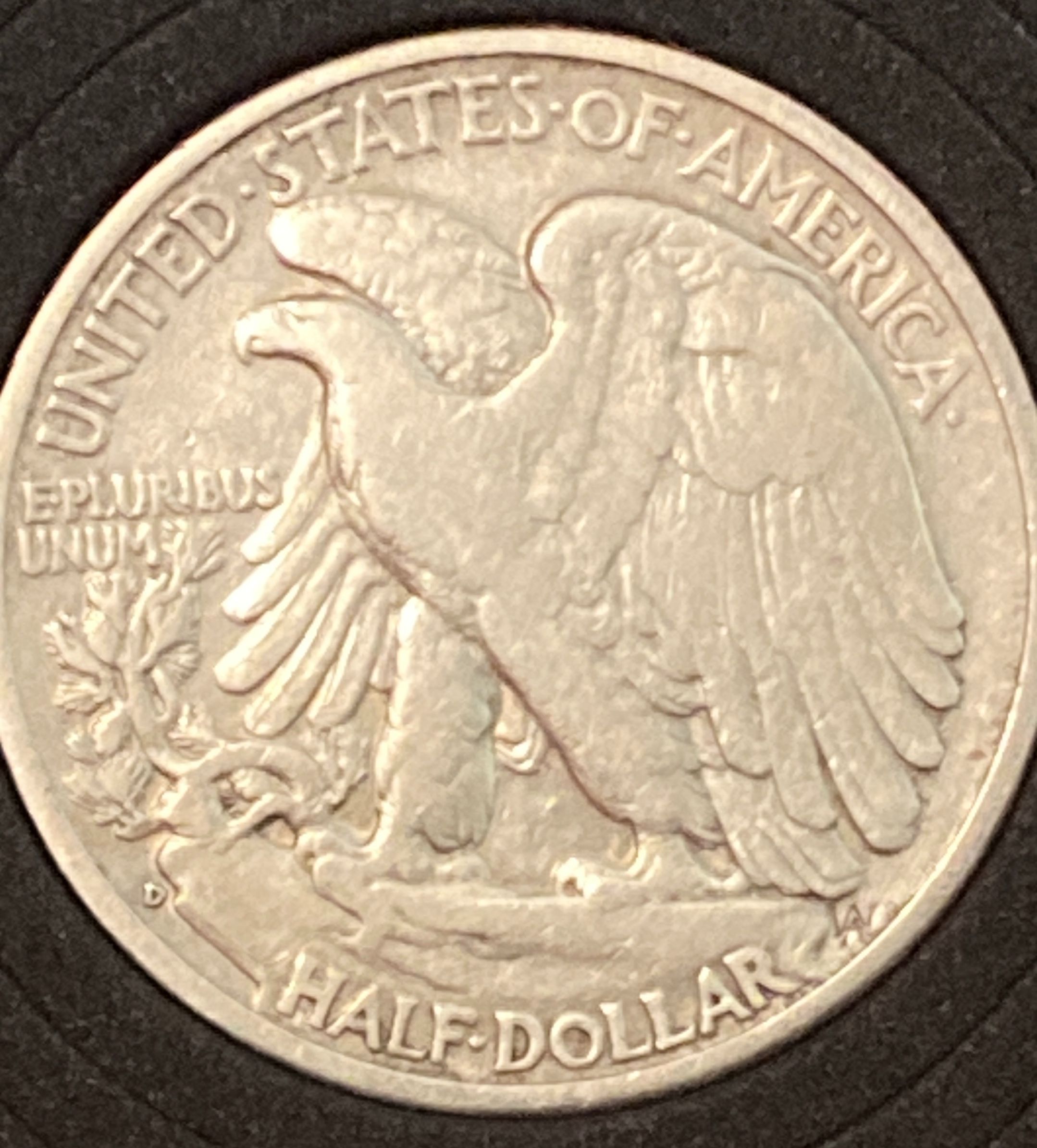I picked this little piece up over the webs not long ago. It is the 1938-D Walking Liberty Half Dollar. Like all coins I purchase, I soon was looking into it's background. There is some real historical significance to the Walking Liberty Half Dollars, which were minted from 1916 to 1947.
It was designed by Adolph A. Weinman, who also designed the widely recognized Mercury Dime as well. He was also a student of the famous Augustus Saint-Gaudens, the renowned sculptor who redesigned several U.S. coins, including the $20 gold Double Eagle.
The coin contains 90% silver and 10% copper and weighs 12.5 grams. It was replaced in 1948 by the Franklin Half Dollar. The Walking Liberty design was later revived for the modern American Silver Eagle bullion coin starting in 1986.
The Walking Liberty Half Dollar has historical signficance for both its artistic symbolism and for the era in which it was minted. It reflected a time of economic and social change that spanned two world wars, the Great Dperession, and the Roaring Twenties. That said, it was around for some turbulent years of the United States and touched the hands of many during some good and bad times.
The Walking Liberty Half was a part of a turning point in U.S. coin design. It broke away from the stiff figurines. It introduced motion in the design. It was also part of the coinage beautification push inspired by President Teddy Roosevelt.

The obverse, from what I could find, is supposed to be a symbol of of American Idealism. It took a little Google-Fu to look this up becuase I know diddly squat about art or it's symbolism. The coin has Lady Liberty walking toward the rising sun, or dawn. It is supposed to represent progress, freedom, and the promise of a new day. These are all ideals strongly associated with America’s identity at the time.
Now, based on what I found they say Weinman’s design was meant to be uplifting during a turbulent time in world history. This happened to be just before the U.S. entered World War I. The flag-draped Lady Liberty and the laurel branches were supposedly meant to symbolize military strength, civic virtue, and peace.

The reverse was intended to be a symbol of national strength and resilience. This is typical of most American art, I knew that before hand. At least the strength part. The eagle is alert with wings partially spread. It stands atop what might be a mountain pine. This waas meant to symbolize America’s rugged terrain and enduring strength.
I just find it so cool that the coin was first relased in 1916, as the U.S. was becoming a global powe. The country was just entering the first World War and would later endure the Great Depression and a second World War.
So, in my mind, this coin is not just a collector’s item. It is a reminder of a turbelent, but defining period in American history.

If you have any further information about this coin you would like to add, like historical information I left out or want to correct any I may have gotten wrong, please drop it in the comments.
Thanks for reading, Joe

Notes: -All content is mine unless otherwise annotated. -Images are my own unless otherwise noted. -Photos edited using MS Paint and/or iPhone SE. -Page Dividers from The Terminal Discord.
Banner image from Hive Veterans Discord Server
